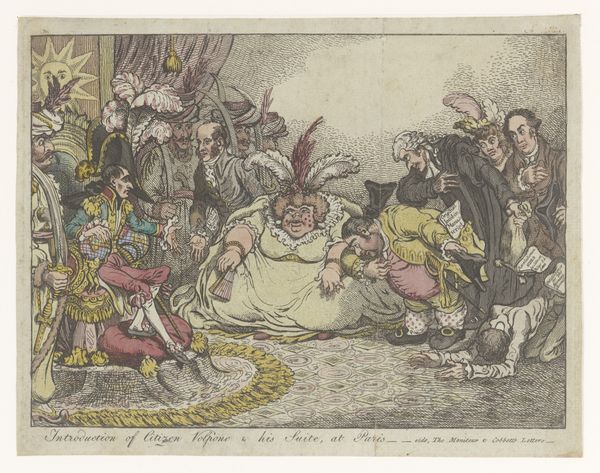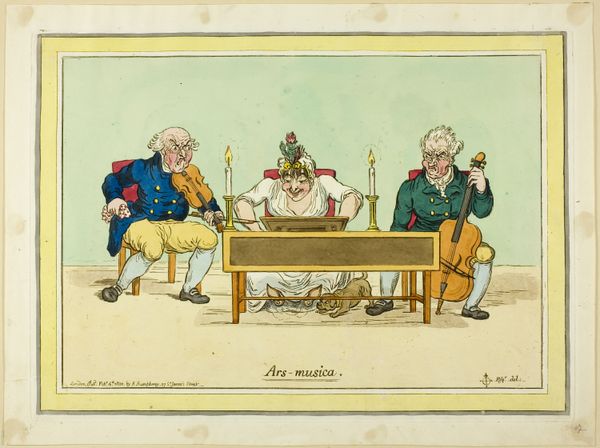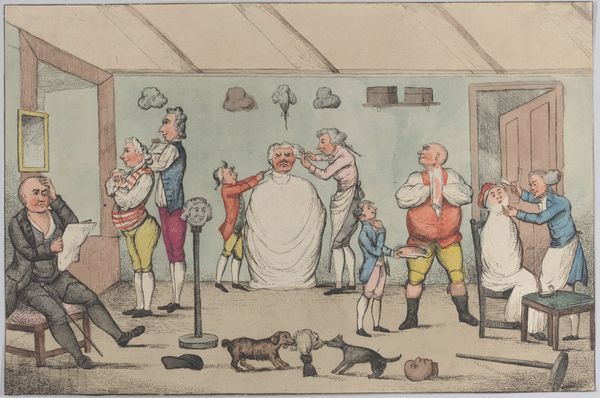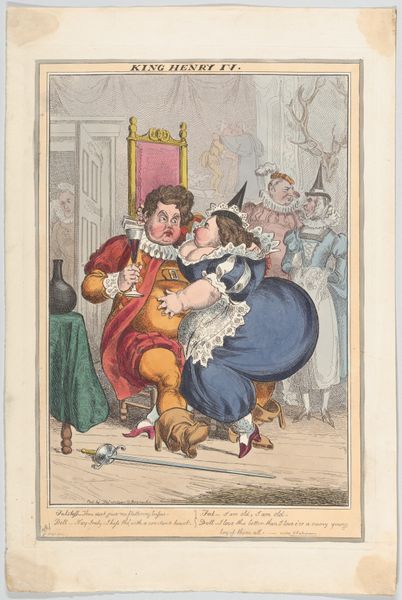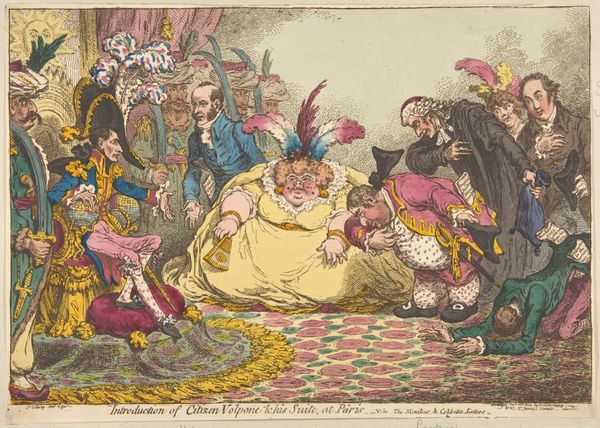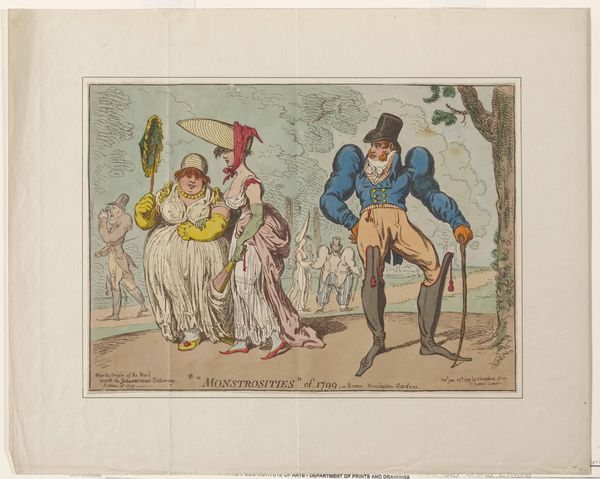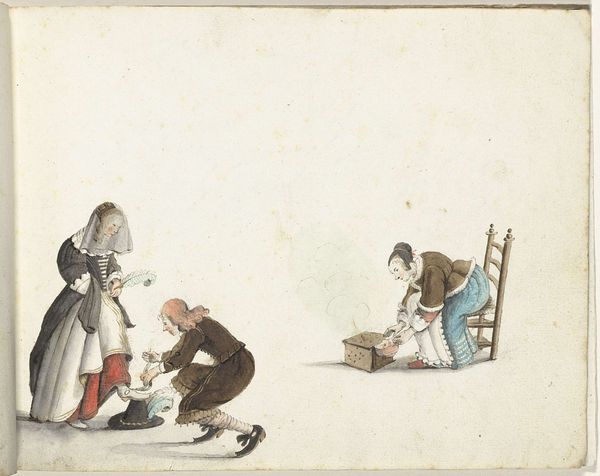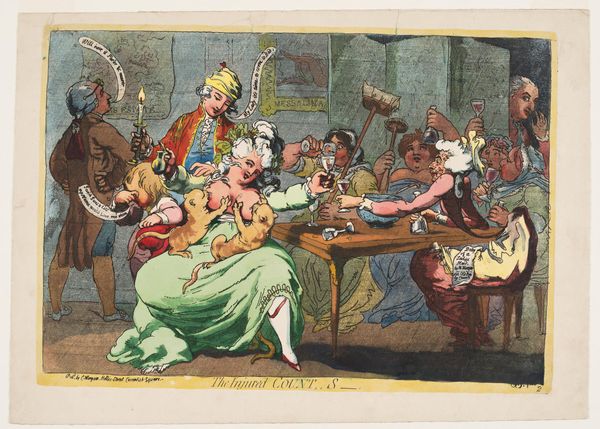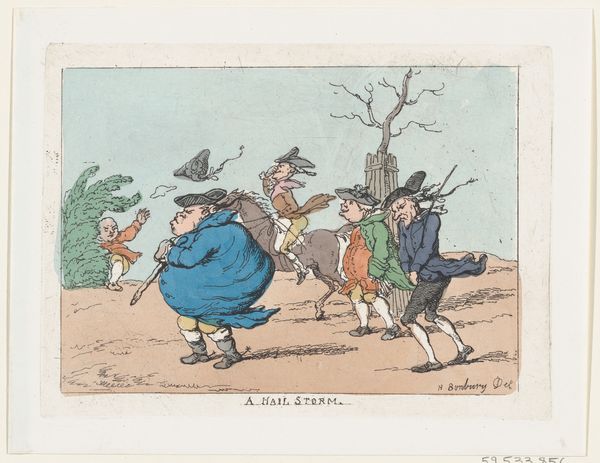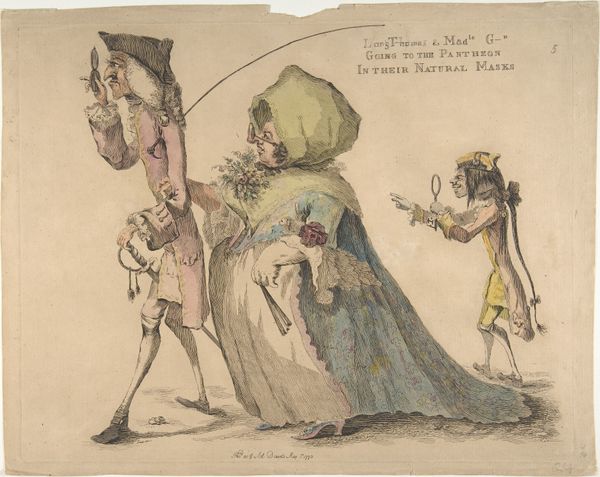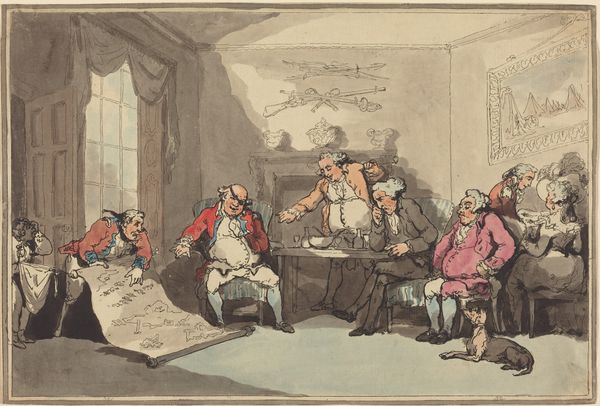
The Battle of the Cataplasm (Tristram Shandy) 1800 - 1827
0:00
0:00
drawing, print, watercolor
#
drawing
# print
#
caricature
#
sketch book
#
watercolor
#
romanticism
#
watercolour illustration
#
genre-painting
Dimensions: Sheet (trimmed): 4 7/8 × 6 11/16 in. (12.4 × 17 cm)
Copyright: Public Domain
Curator: Right then, let’s dive into “The Battle of the Cataplasm (Tristram Shandy),” a watercolor drawing by Henry William Bunbury, made sometime between 1800 and 1827. My first impression? Pure theatrical chaos. Editor: My god, it looks like a domestic squabble elevated to the level of a geopolitical crisis! There’s so much visual tension packed into this scene, between the looming father, his flustered assistant, and the disgusted mother holding her nose. Curator: Oh, but it's so much more than mere squabbling. Look closer! The so-called battle is over a heated poultice or cataplasm, meant for baby Tristram's poor head. It’s wonderfully absurd, the way this domestic drama escalates. That steam coming off the concoction looks rather volcanic, doesn’t it? It adds to the frenzy. Editor: Yes! It plays into the broader cultural obsession of the period: the satirical gaze towards bourgeois domesticity, where something as trivial as a medicinal treatment becomes fodder for social commentary. We're seeing a moment, aren't we, where performative masculinity clashes with maternal roles. And everyone suffers, especially the infant. Curator: It’s true. Bunbury was a master of caricature. Notice how he exaggerates the figures – the father with his belly and indignant expression, the servant practically tripping over himself. The expressions tell it all. He gets to the human condition, and he isn't afraid to laugh about it. There's something timeless in the way he does that. It’s rather playful! Editor: Timeless perhaps, but also rooted in power dynamics. The father's "battle" for patriarchal authority over the child’s health versus the mother’s intuitive aversion is a very gendered struggle, visible here. That steaming cataplasm is a symbol for the battle over bodily autonomy—even a baby’s! Curator: That’s an intense but insightful interpretation. I'll concede, that through a modern lens, it seems to emphasize who decides what's best in matters related to healthcare, especially pertaining to women. What resonates with me, though, is Bunbury’s keen sense for capturing everyday human folly. His ability to immortalize life's comical clashes on paper? Sublime. Editor: Indeed. "The Battle of the Cataplasm" invites us to reflect on these historical constructions, to tease out the threads of gender, class, and the individual in relation to institutional power.
Comments
No comments
Be the first to comment and join the conversation on the ultimate creative platform.
